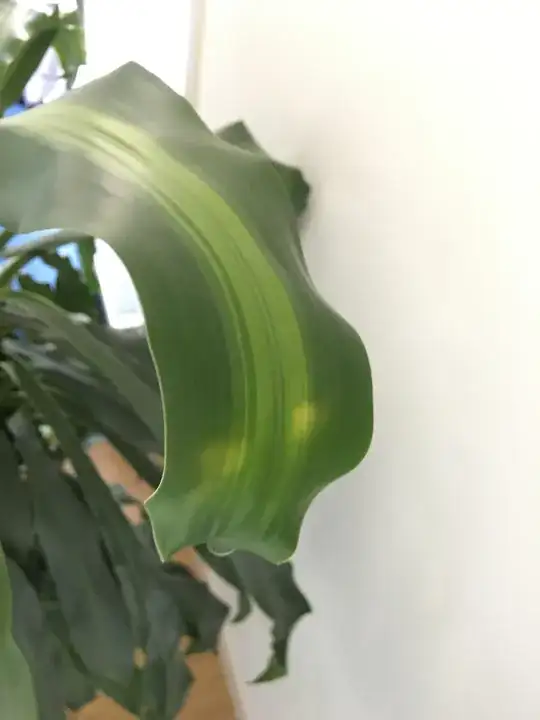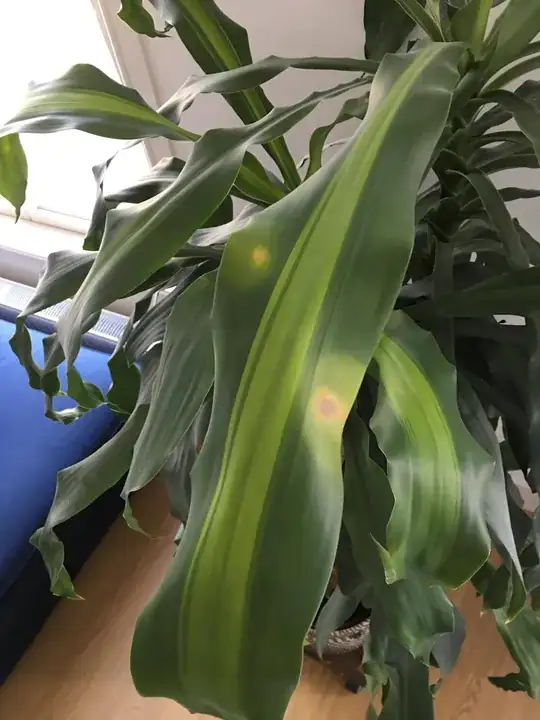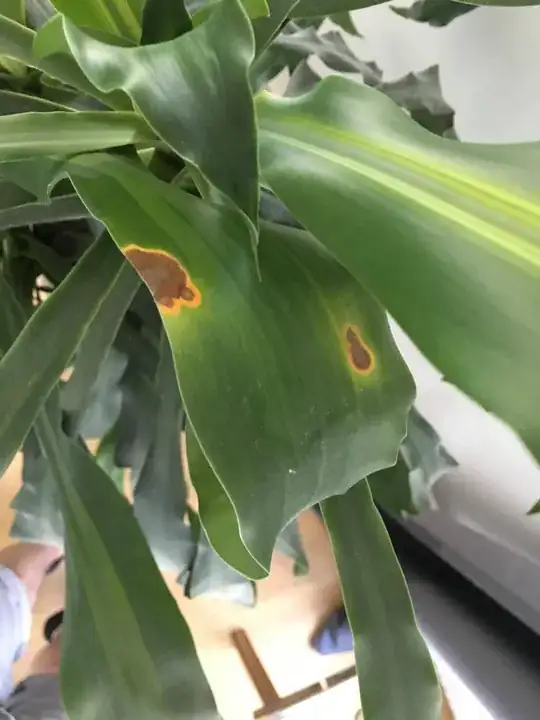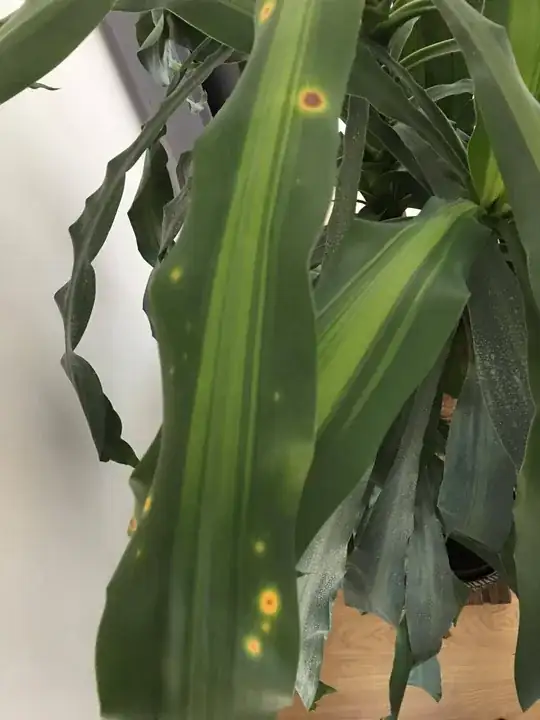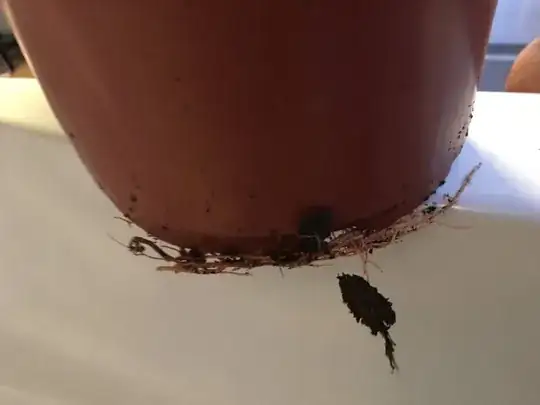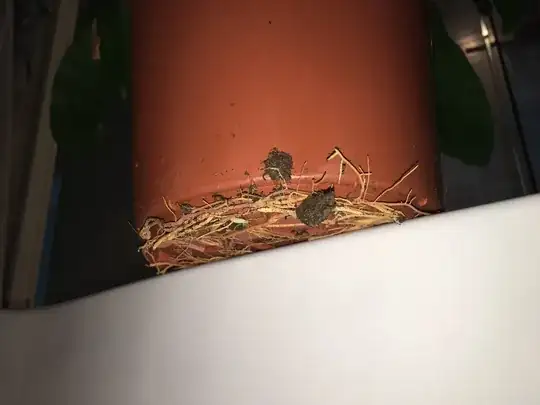Your plant needs to be transplanted into a larger pot. Absolutely. This plant likes a bit of constriction in its pots but this is indeed time to transplant. Not sure what the diameter of this pot is but you will need a pot at least 4 to 6" larger than this pot, use only potting soil, nothing else, I'd get a heavy clay pot or sand cast concrete for weight. Plant gets top heavy and will need a good base, heavy pot. No gravel or rocks in the pot. Just potting soil. Lightly firmed, completely watered as it is being re potted, unless there are branches in dire need of artificial support or the branch might break, do not stake this plant. Let your plant grow a thick and strong truck to support the top growth of this plant.
It looks to me that this pot was inside another pot, yes? You have to transplant it in a larger pot and from the amount of plant I am seeing you need a pot 6" bigger than this plastic terra cotta colored pot.
Next you have to go get some balanced fertilizer. And everyone gets tired of my simple fertilizer, extended release; OSMOCOTE 14-14-14. Use half of their recommended amount and half of the applications for now. Your plant looks incredible for having no chemistry with which to make its own food via photosynthesis.
Purchase plain old potting soil, cheapest is best. It is sterilized and provides the only medium potted plants should have. Make sure that that potting soil has NO fertilizer added. Also, don't get any of the water holding gimmicks like sponges/gel adding into your potting soil. No rock or gravel or styrofoam peanuts below the soil and above the drain hole. None. Lift the bottom of the pot off of the saucer or patio surface about a 1/4 inch using pieces of tile or cute 'pot feet'. That air space enhances drainage big time and dump out any standing water immediately.
Taking this plant into the shower is great. You should make sure to support your plant because the added water to the leaves could be too much weight for the trunk to bear. If you have a covered patio, your indoor plants would love the extra light they could get from a covered, roofed porch or patio. No direct sun. Then just take a hose and hose the entire plants down, supporting plants such as this one, high center of gravity? Grins. When you bring them back inside before any chance of frost, they will have stored far more energy than they could have while indoors and all that extra (food) energy will make your plants look like they just came from the nursery.
All plants in all types of gardens we humans grow for food or beauty, all plants need added fertilizer. Period. Too little, slow death, too much fast death. Osmocote is a sure fire way to safely add the chemistry plants have to have for photosynthesis especially in pots. I've used this in the garden and my landscapes as well. There are many kinds of fertilizers, formulations, some not so 'organic' and some very 'organic' and far more expensive. Plants need Nitrogen, Phosphorus, Potassium as well as over a dozen micro 'nutrients' or rather 'chemicals'; Boron, Iron, Manganese, Magnesium, silica, calcium...these aren't normally added until there are signs of deficiency or excess in these chemicals...Osmocote does just fine for now...extended release...use twice per year unless plant goes out of doors on the covered patio or porch then you'll want to do 3 applications (half the amount in the directions). Fertilizer is critical.
Watering, as you've already mentioned should only be done when the plant and pot are light compared to how heavy when fully watered. Best way to check. You'll see the difference right away. Rather you'll feel the difference right away. No watering on schedules is necessary.
Those spots could be a number of things...right now the least of this plant's worries. Normal spots. A plant that has had no fertilizer will most certainly not be able to fight disease or insects. And will have spots. What kind of lighting, what orientation of window? Drafts? I'd try to keep this plant in its original location until it gets used to new soil, fertilizer...
This guy will LOVE you for the new bigger pot and soil and a little fertilizer. Hope this helps.
